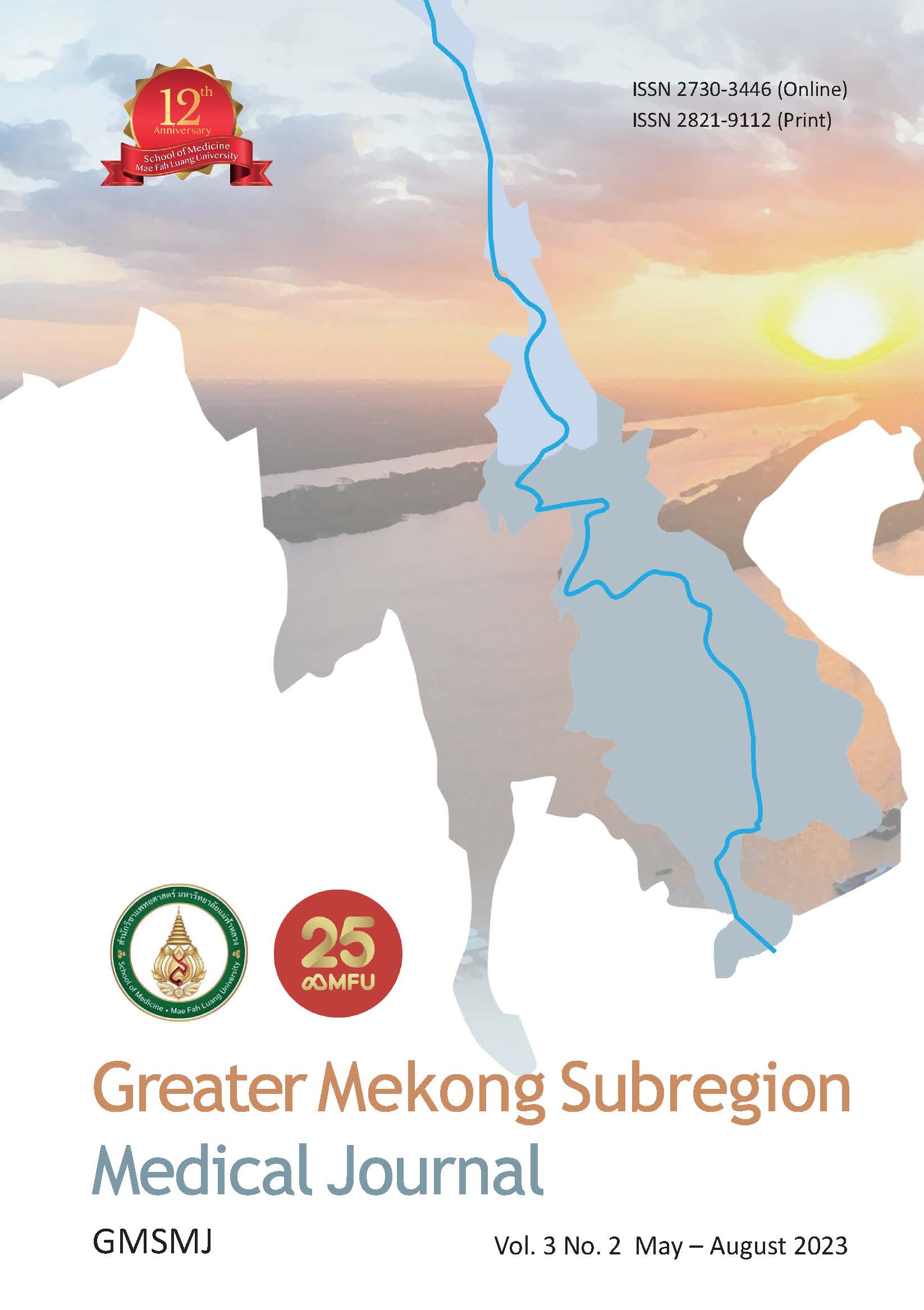Comparison between “Rokprachamtua Khong Chan (My Underlying Diseases)” Web Application and Human-based Conventional Method to Stratify Military Personnel’s Health Status and Report Results Effectively
Keywords:
Web application, Stratification, Checkup results, Effectiveness, Military personnelAbstract
Background: Fort Nawamintharachini hospital developed the “5 colors ball tool” innovation to promote health concerns among military personnel after health checkups. However, this process resulted in time consumption, a high misdiagnosis rate, resource waste, expenses, and healthcare worker burnout. Consequently, a web application was developed to automate health checkup stratification and reporting.
Objective: The aim of this study is to evaluate the effectiveness of the “Rokprachamtua Khong Chan” web application in stratifying and reporting health results compared to human based conventional method.
Methods: This is an observational study which sampled 130 checkup results from 2,285 health results of military personnel who underwent medical checkups with Fort Nawamintharachini Hospital in 2023. The study compared misdiagnosis rate of web application with human-based process by using the same health results and stratified by specialist as a gold standard. Furthermore, the study also measured the time to report heath results.
Results: 2,285 checkup results were stratified into the following groups: green group 510 (22.32%), yellow group 482 (21.09%), orange group 759 (33.22%), pink group 232 (10.15%), and red group 302 (13.22%). The misdiagnosis rate of web application was lower than
human-based conventional method which were 5.38% and 10.77% respectively (p=0.05). The web application reduced the time it took to stratify and report results from three months to seven days.
Conclusion: The “Rokprachamtua Khong Chan” web application is a useful tool that utilizes computer-based processing and technology to stratify the health status of military personnel. The application offers several advantages, including preventing human error, shortening the time required to report health results, and streamlining the process.
References
Jamjumroon P, Phatisena T. Using the 7 Colors Diabetes Mellitus selfawareness evaluation project in preventing and controlling Diabetes in subdistrict health promotion hospitals in Nakhon Ratchasima. Ratchaphruek Journal. 2017 May - August; 15: 125-34.
Juwa S, Wongwat R, Manoton A. The effectiveness of the Health Behavior Change program with 7 Colors Ball Tool on knowledge, health belief and behavior related to the prevention and control of Hypertension and Diabetes Mellitus, in Maeka Sub-District, Muang District, Phayao Province. Songklanagarind Journal of Nursing. 2019 April - June; 39: 127-41.
Lee Ventola C. Mobile devices and Apps for health care professionals: Uses and Benefits. P T. 2014; 39 (5): 356-64.
Nohara Y, Kai E, Pratim Ghosh P, Islam R, Ahmed A, Kuroda M, et al. Health checkup and Telemedical Intervention Program for preventive medicine in developing countries: Verification Study. J Med Internet Res. 2015; 17 (1): e2. https://doi.org/10.2196/jmir.3705
Han M, Lee E. Effectiveness of mobile health application use to improve health behavior changes: A systemic review of randomized controlled trials. Healthc Inform Res. 2018; 24 (3): 207-26. https://doi.org/10.4258/hir.2018.24.3.207
Nakhornriab S, Wattanakitkrileart D, Charoenkitkarn V, Chotikanuchit S, Vanijja V. The effectiveness of mobile application on medication adherence in patients with Stroke. Journal of Nursing Science. 2017; 35.
Sakboonyarat B, Mungthin M, Hatthachote P, Srichan Y, Rangsin R. Model development to improve primary care services using an innovative network of homecare providers (WinCare) to promote blood pressure control among elderly patients with noncommunicable diseases in Thailand: a prospective cohort study. BMC Primary Care 2022; 23: 40. https://doi.org/10.1186/s12875-022-01648-4
Zaman S B, Evans R G, Singh R, Singh R, Singh A, Goh T Y, et al. Usability and acceptability of the software ‘Arogya Sahyog’ to assess non-communicable diseases in rural India 2022 December; 11. https://doi.org/10.1016/j.hlpt.2022.100681
Pratama T, Cahyadi A T. Effect of user interface and user experience on application Sales. IOP Conference Series Materials Science and Engineering 2020 August; 879 (1): 012133. https://doi.org/10.1088/1757-899X/879/1/012133
Darejeh A, Singh D. A review on user interface design principles to increase software usability for users with less computer literacy. Journal of Computer Science. 2013; 9 (11): 1443-50. https://doi.org/10.3844/jcssp.2013.1443.1450
Ali A, Alrasheedi M, Ouda A, Capretz L F. A study of the interface usability issues of mobile learning applications for smart phones from the user’s perspective. International Journal on Integrating Technology in Education (IJITE) 2014 December; 3. https://doi.org/10.5121/ijite.2014.3401
P r e v e n t i o n a n d C o n t r o l o f Noncommunicable Diseases in Thailand- The Case for Investment :United Nation Thailand; 2021 (Prevention and Control of Noncommunicable Diseases in Thailand – The Case for Investment | United Nations in Thailand).
Downloads
Published
How to Cite
Issue
Section
License
Copyright (c) 2023 Greater Mekong Subregion Medical Journal

This work is licensed under a Creative Commons Attribution-NonCommercial-NoDerivatives 4.0 International License.






